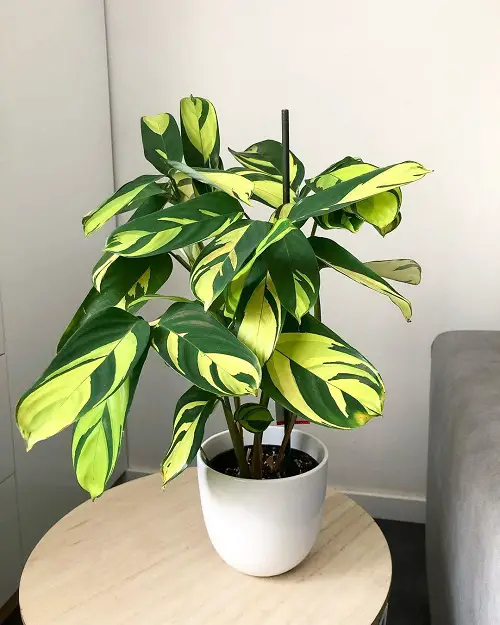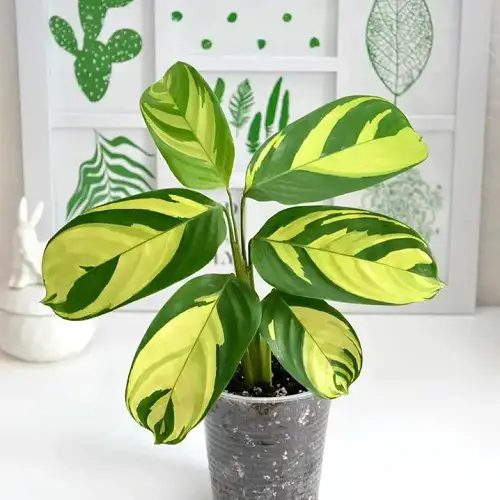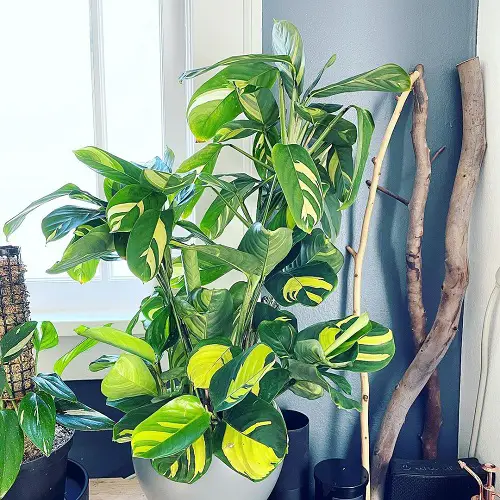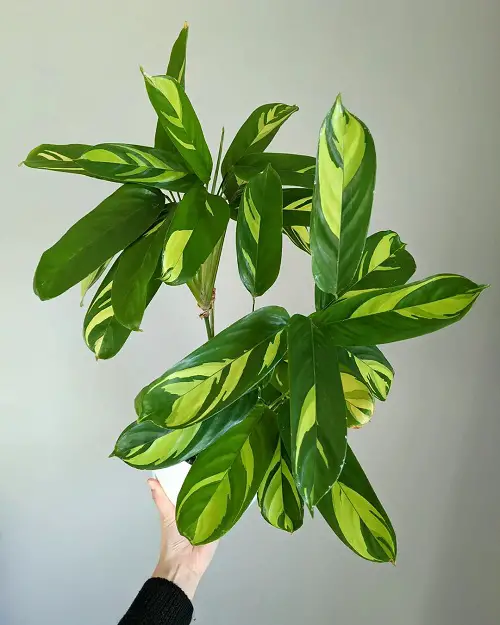If you are thinking of Growing Bamburanta, then this detailed guide on Ctenanthe Lubbersiana Care will help you out!

With fascinating green variegated leaves, Bamburanta stands out with its color combination! Here’s all you need to know about how to grow it with our Ctenanthe lubbersiana Care guide!
Check out some of the most beautiful types of prayer-plants here
Ctenanthe lubbersiana Plant Information
This variegated, tropical beauty belongs to Southern Brazil and the Prayer plant family. It can usually reach up to 2-3 feet tall, with oval-shaped, long leaves flaunting irregular stripes in bands of yellow and green.
Ctenanthe lubbersiana loves warmer climates and medium indirect sunlight. The leaves are delicate and thin; they need higher humidity levels and frequent watering.
Fun Fact: Ctenanthe undergoes nyctinasty, where it folds up its leaves at night.
Propagating Ctenanthe lubbersiana

It is extremely easy to propagate this plant via stem cuttings. Snip off a 4-6 inches long stem and place it in soil or water. In 3-6 weeks, you will notice new roots growing from the nodes of the leaves.
Look at the most colorful houseplants here
Requirements for Growing Ctenanthe lubbersiana

Light
Ctenanthe lubbersiana does best in indirect sunlight. This plant can also work well in low light conditions but never place it in a spot that receives direct light to avoid scorching of leaves.
Soil
This variegated plant loves to grow in moist and well-draining soil. Use a peaty soil mix combined with perlite to improve drainage.
Alternatively, mix sphagnum moss, coco coir, or coco peat with compost and perlite in a 3:1 ratio for best results. Also, add a thick layer of mulch on top to stop any loss of moisture.
Water
Water Ctenanthe lubbersiana once the top 2-3 inches of the soil is a little dry for best results. It is not a drought-tolerant houseplant but rather forgiving if you sometimes forget to water it. Brown edges and leaf tips can be because of prolonged periods of dryness.
Temperature
Ctenanthes love the hot and humid conditions and grow best in a temperature range of 65-85°F or 18-30°C. Do not place it near any cold windows, drafts, or drastic temperature fluctuations.
Humidity
Like most other tropical houseplants, Ctenanthe lubbersiana appreciates a warm and humid spot with 40-70 percent humidity. Keep its pot on a pebble tray filled with water for a drier atmosphere.
What are some of the fantastic indoor philodendron benefits? Find out here
Ctenanthe Lubbersiana Care

Fertilizer
Use a general houseplant fertilizer to feed this plant every 4-5 weeks during spring and summer. The plant does not need fertilization during fall and winter when growth slows.
Pruning
Prune this plant from the nodes whenever you see it getting overcrowded. Trim off the dead, damaged, old, decaying parts from time to time.
Pests and Diseases
Keep watch for spider mites, scales, aphids, thrips, mealybugs, and whiteflies that usually make their homes in the undersides and cubbyholes of the leaves.
Some of the diseases that can attack this plant are rust, powdery mildew, leaf-spot disease, root rot, southern blight, and botrytis.
Toxicity
Ctenanthe Lubbersiana is a known houseplant that is non-toxic to pets and humans if consumed. However, this plant is mildly toxic and can cause allergies. So, placing this plant away from pets and children’s reach is best.


